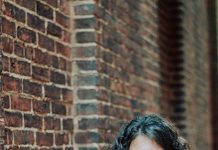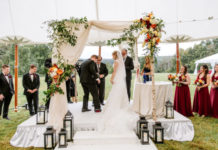 For students who are curious about the college experience or a meaningful career in research, a traditional high school curriculum will only provide so many answers. But several private schools in Baltimore are helping their students step out of the classroom—and into the real world of research and collaboration. Through these place- ments with universities, students find out there’s no substitute for the real thing.
For students who are curious about the college experience or a meaningful career in research, a traditional high school curriculum will only provide so many answers. But several private schools in Baltimore are helping their students step out of the classroom—and into the real world of research and collaboration. Through these place- ments with universities, students find out there’s no substitute for the real thing.
FRIENDS SCHOOL OF BALTIMORE
At Friends School of Baltimore, history teacher Josh Carlin coordinates the University Partnership Program (UPP), which has placed nearly 40 students in two university programs over the last year. In collaboration with Johns Hopkins University, the school assists Dr. Erin Chung, a political science professor, with research for a book project that explores ethnic demo-cracies. For this yearlong project that serves as a senior history elective, 20 Friends students work as Dr. Chung’s research assistants, creating a database of citizenship laws and immigration laws around the world. “This is hard research. It’s stressful but authentic learning,” says Carlin. “And the students are reporting to a higher authority than me as a teacher.”
The other UPP placement offered by Friends is a semester-long junior or senior elective in English and history coordinated with Duke University’s Haiti Lab. Launched at Friends in 2011 and still going strong, this elective allows students to work with Duke students on research concerning Haitian history and culture. In particular, the students focus their research on the late 18th century, when what is now known as Haiti was the French colony Saint-Domingue and most of the agricultural economy was fueled by slave labor.
The phenomenon of slaves running away, called marronnage, was widespread, and many fugitive slaves were reported missing in advertisements run by their owners in the weekly newspaper. This year, 19 Friends students will translate these fugitive slave ads and enter them into a database, which scholars can use for research. Through this work, the students uncover information about the population that would otherwise not be known, such as the slaves’ names, ages, physical description, African nations of origin and language skills.
David Zeger, a senior who did both translating and data entry, found the project moving. “At the beginning, I didn’t anticipate the gravity of what I was about to read. It was so disgusting. These were human beings treated like they were lost soccer balls,” he says. “It felt good that their story will get out because of something we did.”
Dylan Coiro, another senior who worked on the Haiti Lab, says, “We’re used to doing a lot of research, especially in history, at our school. This project put all of that into a real-world context.”
And Uma Scharf, a senior who translated the marronnage ads from French, says that as part of this project she and her classmates learned quite a bit about the culture of Haiti. “Before this class,” she says, “I didn’t know that much about Haiti, and it was really cool to realize that I had more connection to the culture than I thought.”
Carlin likes that the projects with Dr. Chung and the Haiti Lab provide real-world application for his students. “The beauty is that the students are doing work that the professors need,” he says. “We’re providing highly educated, highly motivated and brilliant students. And in three years there’s been almost no complaining.”
THE BRYN MAWR SCHOOL
Eric Elton, the STEM director at The Bryn Mawr School, works to nurture students’ interests in science, technology, engineering and mathematics (STEM). To that end, he places students in summer internships with mentors at research labs in schools including Johns Hopkins University. The internships don’t count as classes, and there’s no academic credit. But the students find the experience invaluable.
Elton’s goal is to find advisers at labs that fit with his students’ interests. “The students and I sit down and figure out what they want to explore until we find the spark,” he says.
Last summer, Teresa Norman, a senior, interned at the JHU Whiting School of Engineering in the Department of Geography and Environmental Engineering, known as DoGEE. Building on a doctoral student’s study of the hydraulic substructure at Oregon Ridge Park in Baltimore County, Norman’s work was to plot along transects, count tree species and use calipers to measure the diameters of trees in the transects. The goal is to examine patterns of tree growth that might correlate with substructures such as water, bedrock and clay. “I can identify most of the tree species at Oregon Ridge,” she says. Although her research is preliminary, Norman says her data show a relationship between water and the growth of mountain laurel. “Before this,” she says, “I didn’t really have any grasp of what environmental engineering was, and now it’s opened up as a field of interest for me.”
Feddi Roth, also a senior, has done two summer internships through Bryn Mawr. The first one was at the U.S. Naval Research Laboratory Science and Engineering Apprenticeship Program, where she worked with nanowires. For her second internship, she worked with the Johns Hopkins School of Medicine in the Department of Oncology, exploring whether nanoparticles can be used as a treatment for cancer. Her mentor was Dr. Mohammad Hedayati, a postdoctoral fellow who guided her research on the behavior of nanoparticles to see if they might target specific cells with the application of heat. In the end, Roth says, “It seemed like a viable way to treat cancer.” Dr. Hedayati will use some of Roth’s data in a publication and will list her as one of the authors.
“The coolest part was that I got to take care of my own flask of cells,” says Roth. Along with two other Bryn Mawr students at the lab, she was invited to department meetings so that she could see how research works at a university. “I was amazed by how people work together in a lab,” she said. “Everybody shared information, there were constant group meetings and a lot of exchanging ideas.”
Elton says that when the JHU advisers report back to him, they tell him they were amazed at the quality of the students’ work. “Send me more, they say,” says Elton. “At the beginning, the students find it really challenging, but by the end most of them feel a huge pride in what they achieved.”
GARRISON FOREST SCHOOL
At Garrison Forest School, the Women in Science and Engineering (WISE) program is in its 10th year. Juniors and seniors are paired with graduate-level research labs at Johns Hopkins University across the STEM disciplines, and find themselves at settings such as the Bloomberg School of Public Health, the Krieger School of Arts and Sciences and the Whiting School of Engineering and Jhpiego, a JHU-affiliated organization that focuses on international public health. For about four months, students conduct research with their assigned lab two or three afternoons a week, working closely with the graduate students and faculty leading the lab.
Andrea Perry, the dean of special programs and director of the James Center, says that the purpose of WISE is to attract young women to careers in STEM. “Women are well-represented in health and medicine,” she says. “This is a targeted effort for engineering placement.” By the end of this year, the program will have served 150 students.
Some of the placements have included the exploration of a link between aroma and Alzheimer’s disease; the study of the behavior of electric fish in order to replicate it in robots; the study of how the antennae of cockroaches follow surfaces; and an HIV intervention-based project at the Bloomberg School.
Katherine Paseman, who is now in her first year at the Massachusetts Institute of Technology, did her placement at Jhpiego. Working with Jhpiego project engineer Sean Monagle, Paseman researched ways to develop cheaper urine dipsticks that could be used in developing nations to test pregnant women for gestational diabetes and preeclampsia, and to test all women for urinary tract infections.
“It was a combination of bench work and reading existing patents,” says Paseman. “Sean gave me a lot of freedom and responsibility.” Some of her work was done at the biomedical engineering building at JHU, where the Jhpiego engineers are based. After months of careful measuring and research, Paseman concludes that, “The work’s never really done in research, but I know I’ve contributed and my work is important.” What was most helpful to her was how the experience built her confidence.
“I feel like a peer with the people I encounter at MIT instead of just another high school student,” she says.
“These students are part of the process where new knowledge is being created, where they learn about the open-ended aspect of research,” says Perry. “They learn a lot about failure, something most of them are not familiar with. They learn a lot about patience and what it takes to tackle a question. They also learn what it takes to maintain excitement and focus over the long haul.”
HIGHER LEARNING
Five more programs that bridge high school and college
St. Paul’s School for Girls offers the Scholars Program, a three-year independent study opportunity that teaches students to research a chosen topic rigorously and report on community and global impact. Students may apply as freshmen to participate from sophomore through senior years. For her smile-inducing project, “Animals and People,” which looks at the effect of dogs on human anxiety, Catherine Schwab ’15 worked with Dr. Doug Granger of Johns Hopkins School of Nursing, the Center for Inter-disciplinary Salivary Bioscience Research and Drs. Cynthia Zahnow and Huili Li of the Sidney Kimmel Comprehensive Cancer Center at Hopkins Medical Institute.
Maryvale Preparatory School partners with Towson University and Anne Arundel Community College to provide online classes for their high-achieving high schoolers. Through Maryvale’s new Leadership Institute, the online courses enable Maryvale girls to start college armed with course credit and learn something about their intended major in comfy advance of the first semester of university life. Not to mention: The beefed-up transcripts impress admissions committees. Maryvale graduate Anna Karwacki ’14 took a class called Computing Programming Logic at Towson last year, which gave her an edge applying to Rochester Institute of Technology, where she now studies gaming. Upper School students may apply for short-term (one-day and weeklong) study onsite at both Johns Hopkins and the University of Maryland.
Boys’ Latin partners with What Works: Raising Boys, Engaging Guys and Educating Men, a psychologically inclined initiative led by Dr. Christopher Howard and Hampden-Sydney College. “What Works” partner Dr. Michael Thompson, a celebrated child psychologist, has served for the last two years as resident fellow at Boys’ Latin’s Bauer Institute for Leadership and Personal Growth, which serves to enhance personal growth and increase mentoring opportunities.
Each year, one student in the STEM Institute at the Roland Park Country School accepts an internship through Hopkins Department of Cognitive Science. Students regularly engage in study via the university’s celebrated Space Telescope Science Institute. Additionally, RPCS holds a Teach for America workshop with Becton, Dickinson and Co., in collaboration with Hopkins’ School of Education. RPCS Next Step Program links girls with opportunities at Loyola University and Morgan State. Typically, several seniors shadow professionals at UMD Shock Trauma. RPCS alumna Tanaira Cullens shares her eco research at Morgan State’s Pearl Center with the school’s Chesapeake Bay class. Meanwhile, teaching students from Goucher observe, intern and instruct in the Lower School.
McDonogh’s Energy and Environment Nexus Lab landed online last April. Penn State grad students Marta Hatzell and Mark Ullery helped bring the optimistic project to life—past parent Rob Kershner is the visionary who brought fuel cell technology to the new lab in the Naylor Building, where students will soon begin to apply their advanced learning to real-world eco problems like energy loss. Meanwhile, McDonogh’s choral program will collaborate with the Towson University choir for the second year this spring, including a joint performance on March 8 at Second Presbyterian Church. –Betsy Boyd



